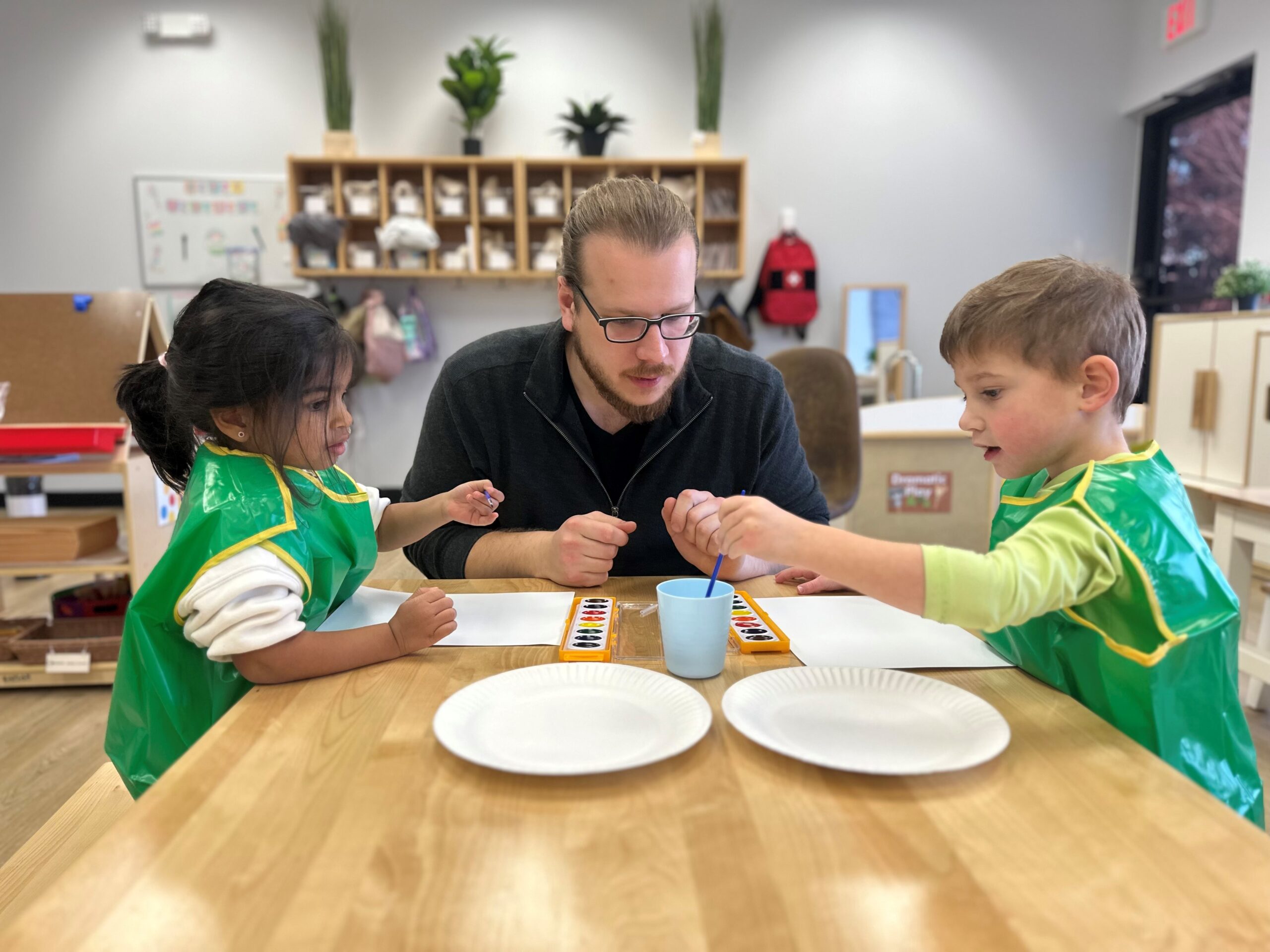Understanding Center-Based Learning in Early Childhood Education

Center-based learning is a research-backed approach widely used in early childhood education to foster holistic development. In this model, classrooms are organized into dedicated learning stations, often referred to as “centers,” that provide opportunities for children to engage in meaningful, hands-on activities. Each center is intentionally designed to support specific developmental domains, including cognitive, social-emotional, physical, and language skills. This method has been shown to not only support children’s academic growth but also to build foundational skills that contribute to lifelong learning.
The Science Behind Center-Based Learning
Research in child development consistently highlights the importance of active engagement and experiential learning in the early years. According to the National Association for the Education of Young Children (NAEYC), children learn best through play and exploration that is guided by intentional teaching practices. Center-based learning supports this by offering a mix of structured and unstructured activities. It encourages exploration, critical thinking, and problem-solving in ways that are age-appropriate and deeply engaging.
A key element of this approach is its ability to cater to diverse learning styles. For example, Howard Gardner’s theory of multiple intelligences suggests that children excel when learning aligns with their strengths—whether those are linguistic, logical-mathematical, spatial, kinesthetic, musical, interpersonal, intrapersonal, or naturalistic. By creating varied learning centers, educators can address these different intelligences, ensuring that all children are supported and challenged in ways that resonate with their unique abilities.
Benefits of Center-Based Learning
1. Promotes Active Engagement
Center-based learning keeps children actively engaged by encouraging hands-on activities that stimulate their curiosity. When children work with materials, build structures, solve puzzles, or act out scenarios, they are deeply immersed in the learning process. This type of engagement enhances attention span, memory retention, and a love for learning.
2. Encourages Social Interactions
Many centers are designed to promote cooperative play and collaboration. For instance, dramatic play centers allow children to engage in role-playing, which builds empathy, communication, and teamwork. Sharing materials in a sensory or building center fosters turn-taking and conflict resolution skills. These interactions are essential for developing social-emotional skills and building healthy relationships.
3. Supports Differentiated Learning
Every child learns at their own pace and has unique interests. Center-based learning provides opportunities for individualized learning experiences. A child who loves art might spend more time in the art center, while another who enjoys puzzles might gravitate toward the math or problem-solving center. Teachers can also tailor activities within each center to meet the developmental needs of different children, ensuring that no child feels overwhelmed or under-challenged.
4. Builds Independence and Decision-Making Skills
Center-based learning encourages children to make choices about where they want to work and how they want to engage with materials. This autonomy helps them develop critical decision-making skills, a sense of responsibility, and the ability to self-regulate their behavior. Research shows that children who have opportunities to make choices in their learning environments tend to be more motivated and confident.
5. Integrates Developmental Domains
Each learning center is designed to focus on specific developmental skills. For example:
• Literacy centers strengthen language and early reading skills through storytelling, letter recognition, and writing activities.
• Math centers promote logical thinking and numeracy through counting, sorting, and pattern recognition.
• STEAM centers encourage creativity and problem-solving through science experiments, building challenges, and artistic exploration.
• Sensory centers support fine motor development and self-regulation through tactile activities like sand, water, or playdough exploration.
• Dramatic Play centers foster social-emotional learning as children engage in role-play and imaginative scenarios.
This integrated approach ensures that children are developing holistically, with each domain supporting the others.
Teacher-Led vs. Child-Directed Centers
In a center-based classroom, there is a balance between teacher-led and child-directed activities.
• Teacher-Led Centers
Teacher-led centers provide focused small-group instruction, allowing educators to introduce new concepts, reinforce skills, and assess individual progress. For example, in a literacy center, a teacher might guide a group in recognizing sight words or practicing phonics. In a STEAM center, the teacher could lead an experiment or a building challenge to spark curiosity and critical thinking.
These centers also allow teachers to work closely with children who need additional support or extension, ensuring that every child’s needs are met.
• Child-Directed Centers
Independent centers allow children to explore at their own pace. These might include dramatic play, sensory bins, building blocks, or art materials. By engaging in self-directed activities, children develop creativity, persistence, and problem-solving skills. Teachers play a supportive role here, observing and facilitating as needed while giving children the space to take charge of their learning.
Creating Effective Learning Centers
At Peacock Learning Academy, we have thoughtfully curated dynamic learning centers tailored to the developmental stages and interests of our students. Each center is designed with clear objectives and is equipped with high-quality materials to support children’s learning. Some examples of our learning centers include:
• Literacy Corner
Stocked with books, storytelling props, and writing materials, this center encourages children to develop language and literacy skills. Activities might include read-aloud sessions, puppet shows, or practicing letter formation.
• Math & Manipulatives
Here, children engage in activities like identifying shapes, sorting, counting, pattern-making, and puzzles. These tasks enhance logical thinking, problem-solving, and fine motor skills.
• STEAM Center
This space combines science, technology, engineering, arts, and mathematics. Children might build structures with blocks, conduct simple experiments, or create art using different materials. These activities encourage innovation, curiosity, and resilience.
• Dramatic Play Area
Children can role-play as chefs, doctors, or community helpers, fostering social-emotional development and creativity.
• Sensory Center
Equipped with materials like sand, water, or playdough, this center supports sensory exploration and fine motor development while helping children regulate their emotions.
• Outdoor Learning Spaces
Learning extends beyond the classroom with outdoor centers that encourage gross motor development, teamwork, and an appreciation for nature.
The Role of the Teacher in Center-Based Learning
Teachers play a crucial role in the success of center-based learning. They are facilitators, guides, and observers who create an environment where children feel safe to explore and take risks. Teachers plan activities that align with developmental milestones and curriculum goals while remaining flexible to follow children’s interests. They also use observations during center time to assess progress, identify strengths, and adapt their teaching strategies.
For example, if a teacher notices that children are particularly interested in building towers in the block center, they might incorporate this interest into a STEAM activity focused on engineering concepts. This responsive teaching approach ensures that learning remains engaging and meaningful.
Evidence-Based Outcomes
Numerous studies highlight the effectiveness of center-based learning in early childhood education. Research from the American Educational Research Association (AERA) shows that children in classrooms that use learning centers demonstrate stronger academic and social-emotional outcomes compared to those in more traditional, teacher-led settings. These children are more likely to develop critical thinking skills, emotional resilience, and a positive attitude toward learning.
Moreover, the Head Start Early Childhood Learning & Knowledge Center emphasizes that center-based activities align with developmentally appropriate practices (DAP) and are particularly effective for promoting school readiness. By engaging in hands-on, play-based learning, children develop the foundational skills needed for success in kindergarten and beyond.
Center-Based Learning at Peacock Learning Academy
At Peacock Learning Academy, we embrace this evidence-based approach to create a vibrant, nurturing, and engaging environment for our students. Our center-based model is more than just a teaching method—it’s a philosophy that values each child’s individuality and potential. By offering a variety of thoughtfully designed learning centers, we ensure that every child has the opportunity to thrive academically, socially, and emotionally.
We also prioritize professional development for our teachers, ensuring they are well-versed in best practices for center-based learning. This includes ongoing training in observation, assessment, and responsive teaching techniques.
Conclusion
Center-based learning is a powerful approach to early childhood education that prepares children for success in school and life. By fostering active engagement, social interactions, and independent learning, it supports the whole child in ways that are both evidence-based and developmentally appropriate. At Peacock Learning Academy, we are proud to offer a learning environment where children can explore, grow, and thrive. Through our thoughtfully designed centers and dedicated teaching staff, we are committed to providing every child with a strong foundation for lifelong learning.
For more information, and also a great resource, please visit NAEYC.

Sejal Dave, Owner and Director
Peacock Learning Academy


